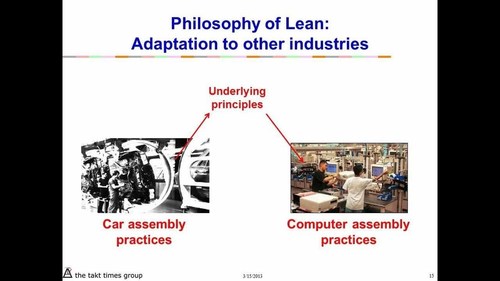Mar 14 2013
Lean and the corporate culture | LinkedIn
See on Scoop.it – lean manufacturing
LinkedIn’s Lean groups currently host several discussions about the cultural dimension of change in organizations in general, and Lean implementation in particular. This topic attracts many comments,
See on www.linkedin.com







Mar 16 2013
Introduction to Lean – 2013 Michel Baudin
See on Scoop.it – lean manufacturing

See on www.youtube.com
Share this:
Like this:
By Michel Baudin • Announcements 0 • Tags: Lean, Lean manufacturing, Toyota, TPS